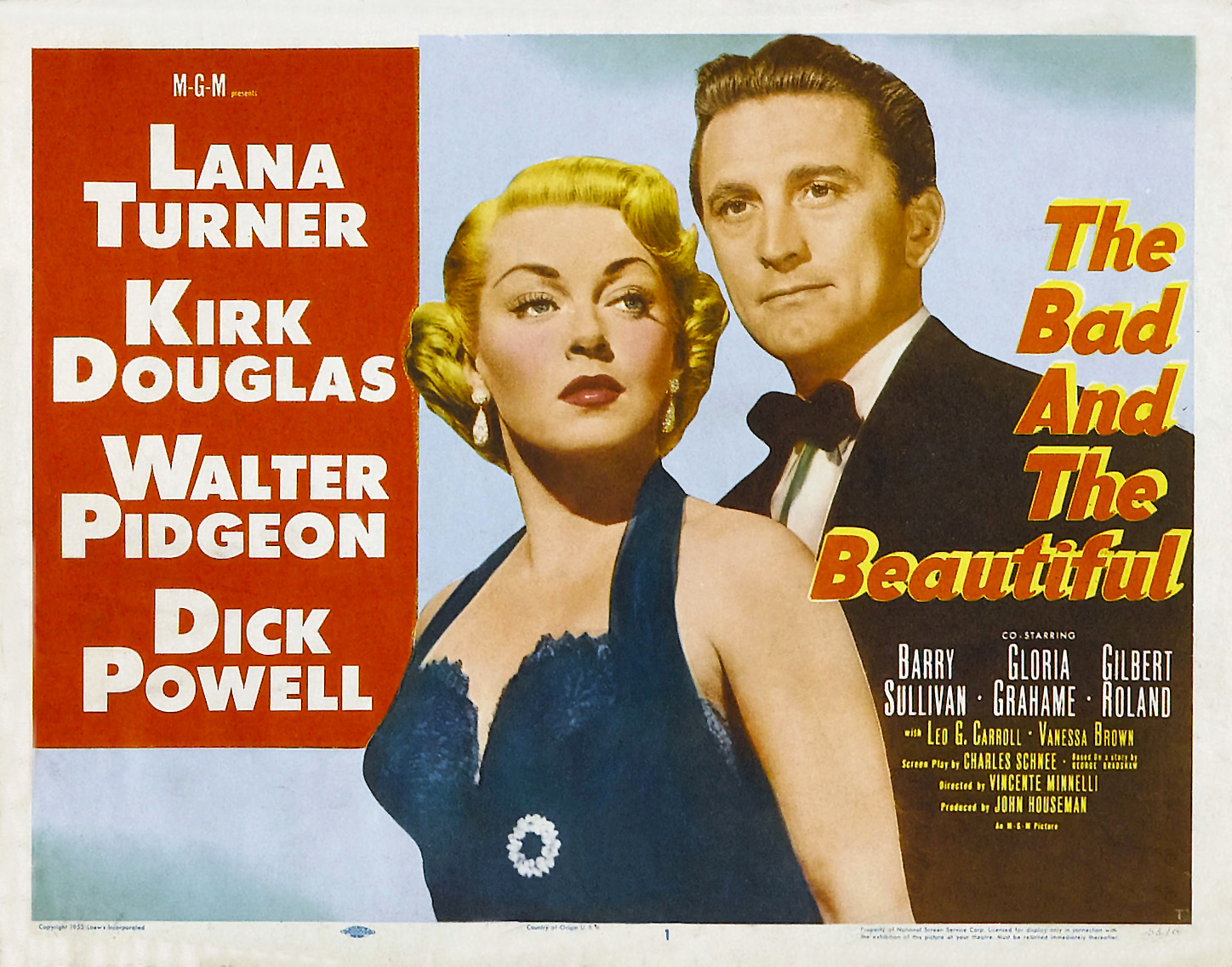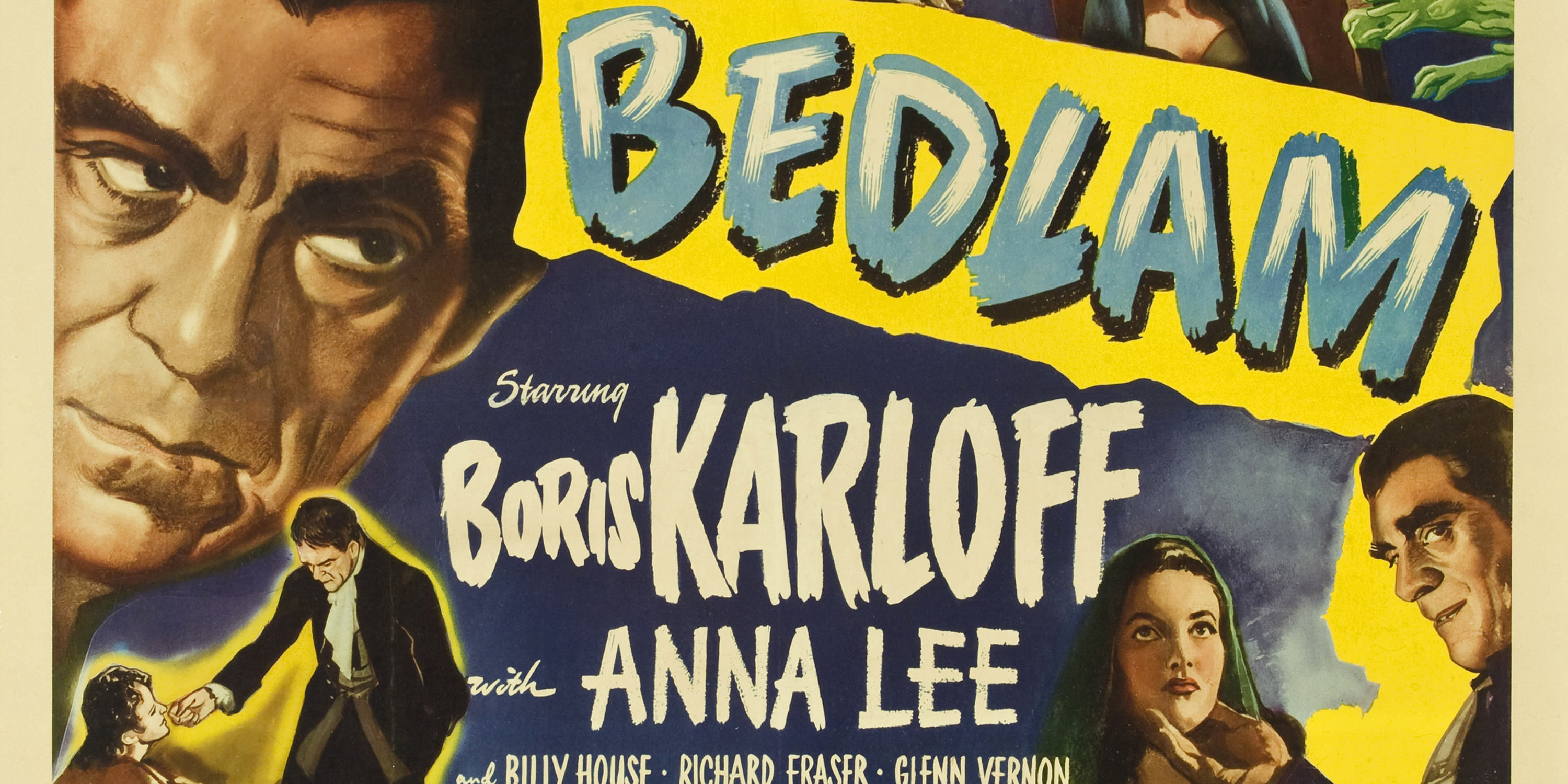Once upon a time, producer Val Lewton’s horror films were only considered the “B” (or secondary) part of a movie double-bill; a slick flick like “The Bad and the Beautiful” was the “A,” or the main attraction.
This weekend, the tables will be turned. The Stanford Theatre screens a new 35 mm print of Val Lewton’s “Bedlam” (1946) as the “A.” The supporting feature is Vincente Minnelli’s “The Bad and the Beautiful,” (1952), the uber-meta MGM melodrama that offers a fascinating look into the world of classical Hollywood from one of its masterminds.
“Bedlam,” the last of Lewton’s unmatched cycle of thrilling “B”-terrors, plays Friday, April 28 to Sunday, April 30 at 7:30 p.m. and also at 3:50 p.m. on Saturday and Sunday.
“The Bad and the Beautiful,” Hollywood’s quasi-modernist tribute to its own genius, plays on all three days at 5:20 p.m. and 9 p.m.
“Bedlam” features Boris Karloff (Frankenstein’s monster) in one of his greatest roles: Master Simms, the brutal head of the titular asylum. When the inhumane practices of Bedlam catch the attention of actress/amateur sleuth Nell Bowen (Anna Lee), Master Simms kidnaps and commits her. It’s about the gap between theory and practice (can Nell the social crusader walk the walk?), female resistance to patriarchy, the blurring between real and nightmarish states and (as is typical of the melancholic Lewton) existential loss inside the soul. It has high-art aims for a surprisingly low-crust “B”; the 18th century English painter William Hogarth receives a screenwriting credit, because Lewton wanted the film to look like one of his grotesque prints from hell (“The Four Stages of Cruelty,” 1751).
“The Bad and the Beautiful” (1952) is not a Lewton film; rather, it’s director Vincente Minnelli’s tribute to artists like Lewton — and a fascinating glimpse at the Hollywood studio system, during its own heyday! This movie-about-movies is not as well-known as its popular older brother, Billy Wilder’s “Sunset Blvd.” (1950), but “The Bad and the Beautiful” is its equal in pathos and performance. It’s a flashback yarn in three parts. Kirk Douglas plays a washed-out producer who wants to get his three favorite people in the biz — a starlet (Lana Turner), a director (Barry Sullivan) and a screenwriter (Dick Powell) — together for one final film. But they aren’t eager to work with such a brutal, manipulative and scheming cad. Each explain their side of the story — what a genius Kirk was, and what a monster.

Though it’s not a direct parallel to Lewton (he tended to leave directors like Jacques Tourneur alone to do their own business on set), one sequence serves as a magnificent ode to the Russian-born producer. The scene: Kirk and Barry are trying to make the most out of a schlocky horror assignment (“Doom of the Cat Men”) neither of them want. Director Barry hates the Cat Man’s costume. But Kirk comes up with an ingenious solution: Don’t show the Cat Man. Barry asks, Will that work? Kirk responds, Of course it will. When Kirk gives Barry his reasons, he gives us the perfect epigram for Lewton’s cinema, and the weird, spooky phenomenon of watching movies:
“What scares the human race more than any other single thing? The dark. Why? Because the dark has a light of its own. All sorts of things come alive!”
(“The Bad and the Beautiful” is one of the many great Minnelli films, but he would outdo himself 10 years later with the even more self-aware “Two Weeks in Another Town” [1962], a modernist snuff film of classic Hollywood’s own suicide — and brief resurrection? This weirdie is even more obscure. I’m convinced J-L Godard made his best ’60s film, ‘‘Contempt,’’ as a response to ‘‘Two Weeks.’’)
This double feature wraps up the Stanford’s month-long retrospective on the films of Val Lewton. The Russian immigrant-producer infected his films with a pungent melancholy that gains extra poignancy for being released as “B” movies (they were meant to be schlocky, disposable, forgotten) during the years America was fighting World War II (1942-46). As the head of a B-movie horror unit at RKO Studios, Lewton was only beholden to three rules: budgets of less than $150,000, running-times of less than 75 minutes, lurid titles (“The Curse of the Cat People”) that couldn’t be changed. Otherwise, Lewton had free reign to make whatever movies he wanted. Even the exploitation-style ad campaigns (“Lovely woman … Giant killer-cat … The same ‘person’! … IT’S SUPER SENSATIONAL!!”) couldn’t do anything to morph the deep stoic respect Lewton bestows upon subjects as diverse as childhood trauma, slavery (in ‘‘I Walked with a Zombie,’’ America’s greatest sin), the mentally insane and patriarchally oppressed Woman.
Val Lewton could have made schlocky quickies — good money, but totally disposable products. He didn’t. Instead, across nine films in a space of only five years, he crafted an intense world crippled by gnawing loss, deep anguish, amnesia of history, amnesia of a dark past and a quasi-suicidal desperateness. It ranks alongside Preston Sturges’ ’40s screwball comedies as the greatest hot streak of classic Hollywood.
Contact Carlos Valladares at cvall96 ‘at’ stanford.edu.
